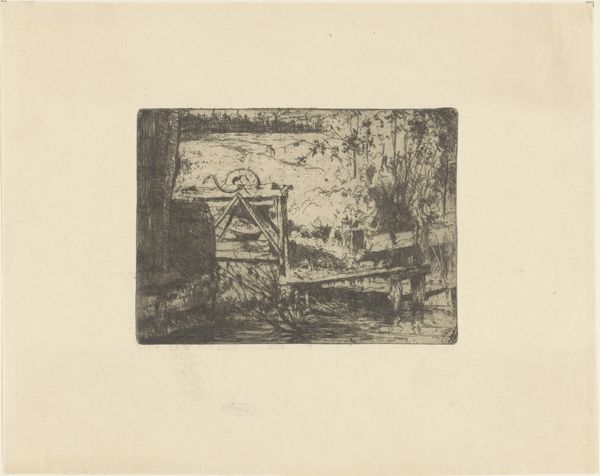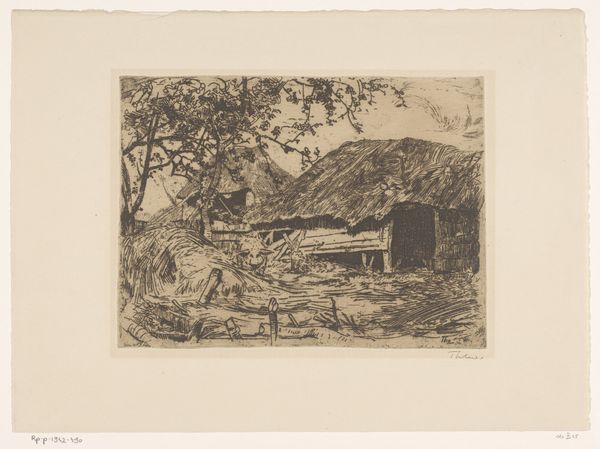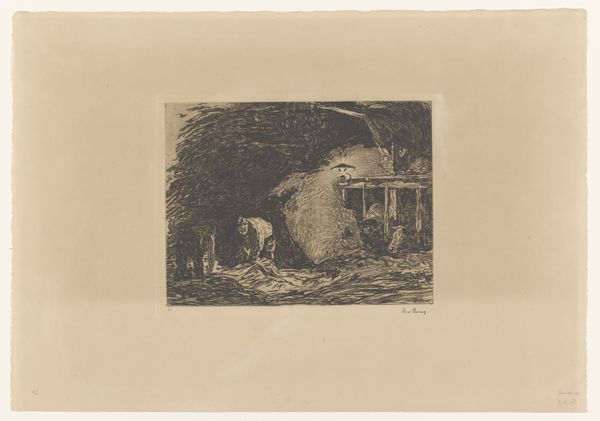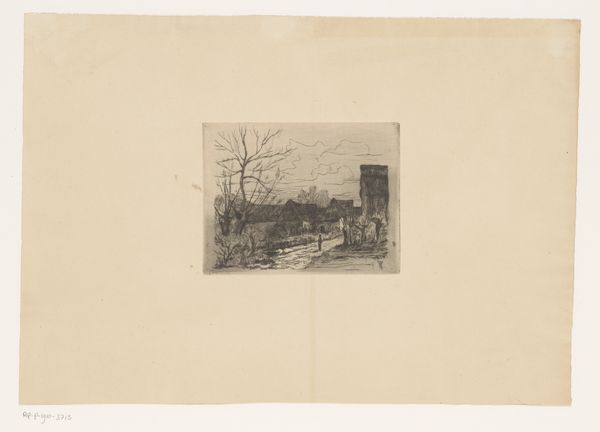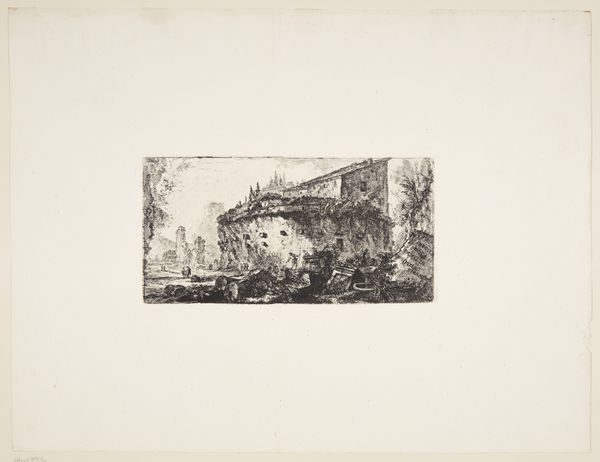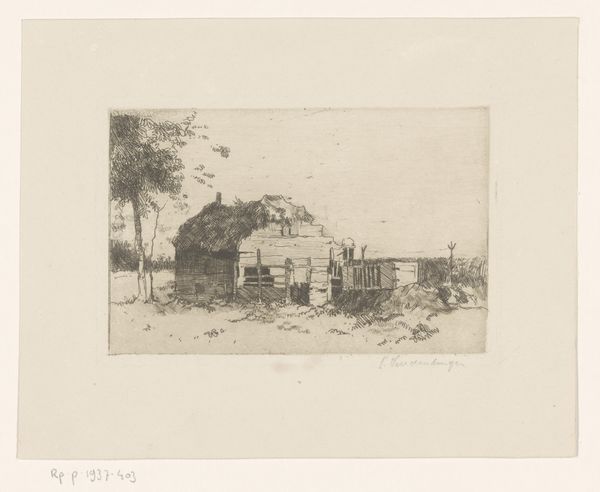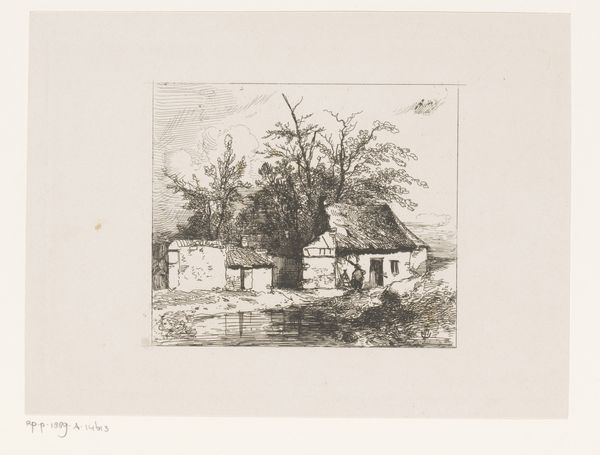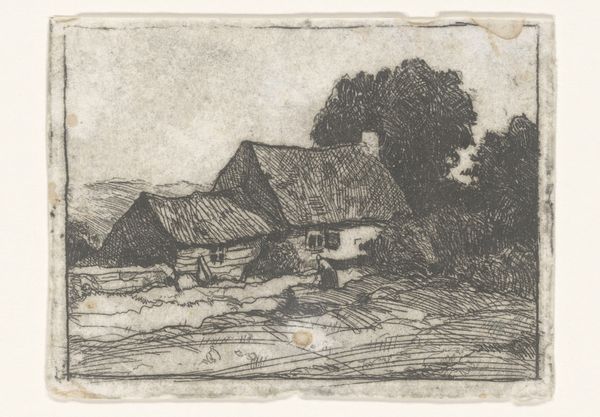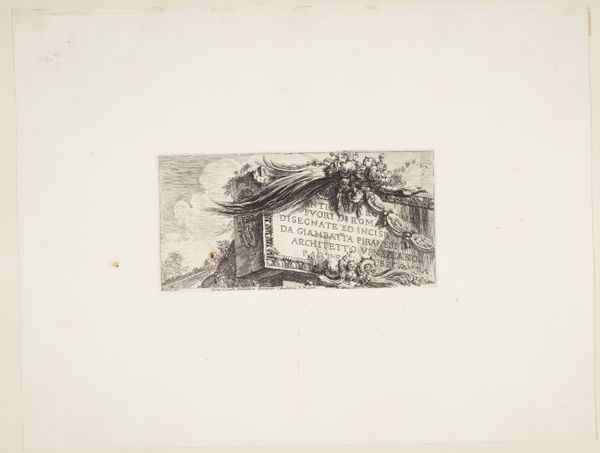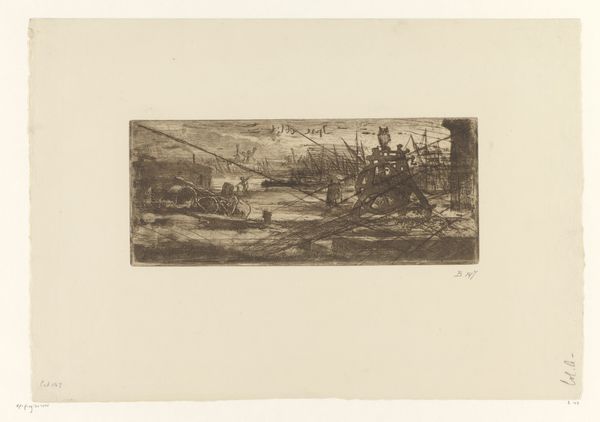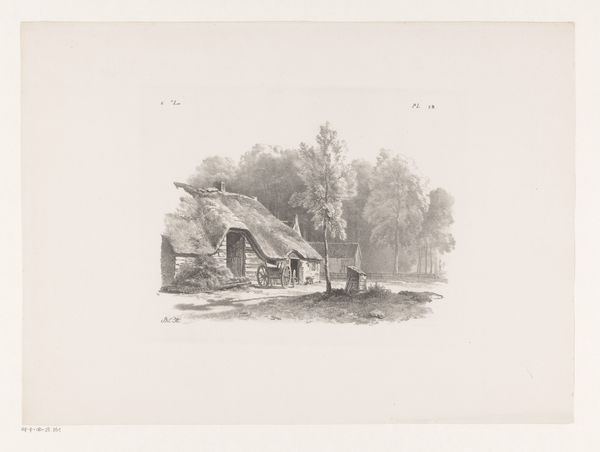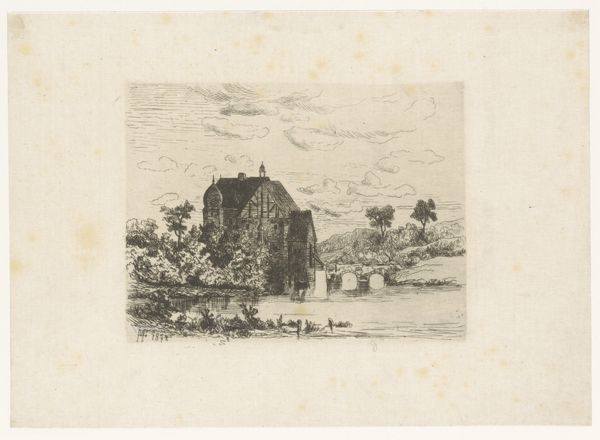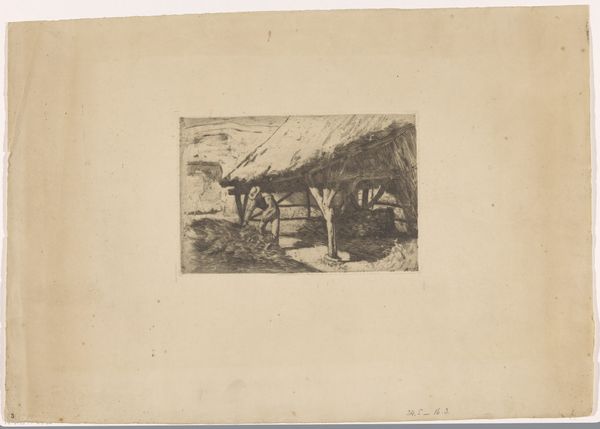
print, etching
# print
#
etching
#
landscape
#
realism
Dimensions: height 111 mm, width 184 mm
Copyright: Rijks Museum: Open Domain
Willem Adrianus Grondhout made this etching called ‘In Limburg’ with a masterful hand. The scene is rendered with such delicate precision that the entire image shimmers with light. Look at the way Grondhout uses the etched line to capture the textures of the building, the hay and the leaves of the tree. The ink is almost alive as it pools and catches the light, creating subtle tonal variations. See how the artist built up layers of these tiny marks, allowing the eye to be lost in the details of a simple, quiet scene. It reminds me of Whistler’s etchings, those subtle tonal studies of the Thames. Just like Whistler, Grondhout uses etching not to represent something perfectly, but to create a feeling, an experience, a mood. The art is in the process, the subtle dance between the artist, the plate, and the acid. Isn't it amazing how a simple scene can embrace such depth and complexity?
Comments
No comments
Be the first to comment and join the conversation on the ultimate creative platform.
